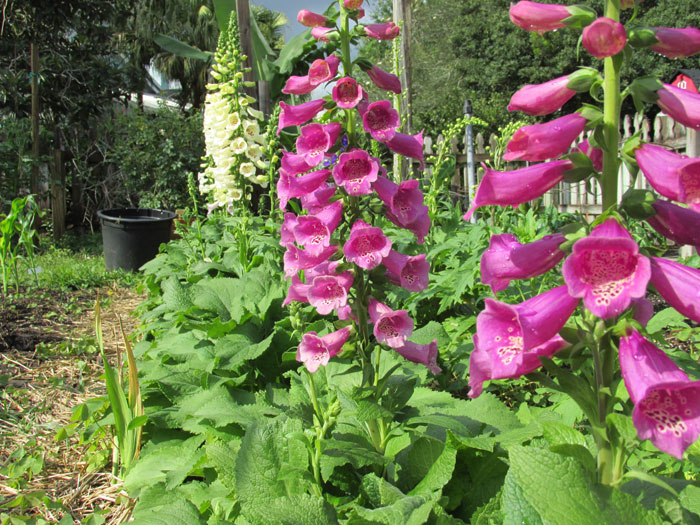Gardeners with northern memories must every now and then think about the perennials and biennials that once grew in their yards. Regretfully some like the peonies, iris and columbine still do not grow locally but others do. And the ones we can grow need an early start - often in the fall.
One favorite many would like to grow is the foxglove. These plants produce an up to 3 foot tall flower stalk with white, pink or purplish blooms. Each bloom seems to look like a little glove from which the plant likely gets its name. Here is the secret to this plant. You have to obtain seeds of the Camelot series. You probably won't find them on seed racks but they can be order over the Internet from mail order companies.
Many remember the great delphinium of the cooler climates opening tall stalks of white, blue and purple blooms. In the center of each bloom, that some say resembles a swimming dolphin, is what's called a bee. This is often a dark portion of the bloom, black to gray in color. Most delphiniums grow from seed and flower locally. But don't both starting them until the weather is cool.
Likely you also have fond memories of hollyhocks. They can grow six to eight feet tall opening mallow type blooms of white, pink, red or maroon colors locally. The secret to growing good hollyhocks is finding a local seed sources. You have to locate an individual with flowering plants to ask for seeds. Gardeners are normally willing to share.
Here is the other secret to success with any of these flowers. Start the seeds in the fall during late October or early November. The seeds need about two months to grow transplants for planters or the landscape. The seeds of some are small or come pelletized to make sowing easy. Use a germination mix and a six-inch or larger diameter container for sowing. Keep the soil moist and begin fertilizing a week or two after germination. Seedlings will need transplanting to small pots and then eventually to the garden.
Some garden centers may offer a few of these plants for sale during late winter and spring but it is a lot more fun and less expensive to grow them yourself.

